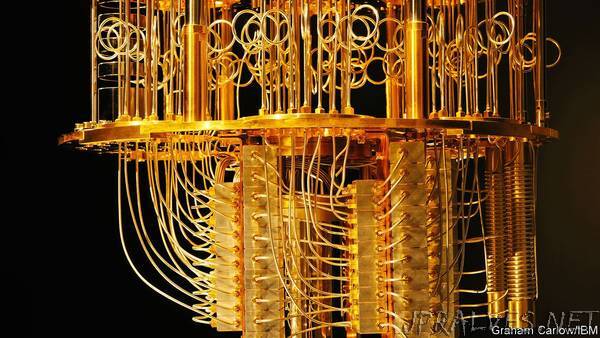
“First time such codes applied to real quantum technology
Scientists at the University of Sydney have for the first time demonstrated improvement in quantum computers by using codes designed to detect and discard errors in the logic gates of such machines.
This is really the first time that the promised benefit for quantum logic gates from theory has been realised in an actual quantum machine, said Dr Robin Harper, lead author of a new paper published this week in the prestigious journal, Physical Review Letters.
Quantum logic gates are formed by entangled networks of a small number of quantum bits, or qubits. They are the switches that allow quantum computers to run algorithms, or recipes, to process information and perform calculations.
Dr Harper and his colleague Professor Steven Flammia, from the School of Physics and University of Sydney Nano Institute, used IBMs quantum computer to test error detection codes. They demonstrated an order of magnitude improvement in reducing infidelity, or error rates, in quantum logic gates, the switches that will form the basis of fully functioning quantum computers.
Dr Jay Gambetta, IBM Fellow and principal theoretical scientist with IBM Q, said: This paper is a great example of how scientists can use our publicly available cloud systems to probe fundamental problems. Here Harper and Flammia show that ideas of fault tolerance can be explored on real devices we are building and already deploying, today.
Quantum technologies are still in their infancy but promise to revolutionise computing in the 21st century by performing calculations thought to be beyond the ability of the largest and fastest supercomputers.
They will do this using the unusual properties of matter at the quantum scale that allow them to process information using qubits. These are computing elements that utilise the fact that quantum objects can exist in an indeterminate state, known as superposition, and can become entangled, a phenomenon describing behaviour not seen in conventional computers.
However, electronic noise easily disrupts these states, quickly producing errors in quantum computations, which makes development of useful machines very difficult.
Current devices tend to be too small, with limited interconnectivity between qubits and are too noisy to allow meaningful computations, Dr Harper said. However, they are sufficient to act as test beds for proof of principle concepts, such as detecting and potentially correcting errors using quantum codes.
Whereas the classical switches in your laptop or mobile phone can run for many years without error, at this stage quantum switches begin to fail after just fractions of a second.”
